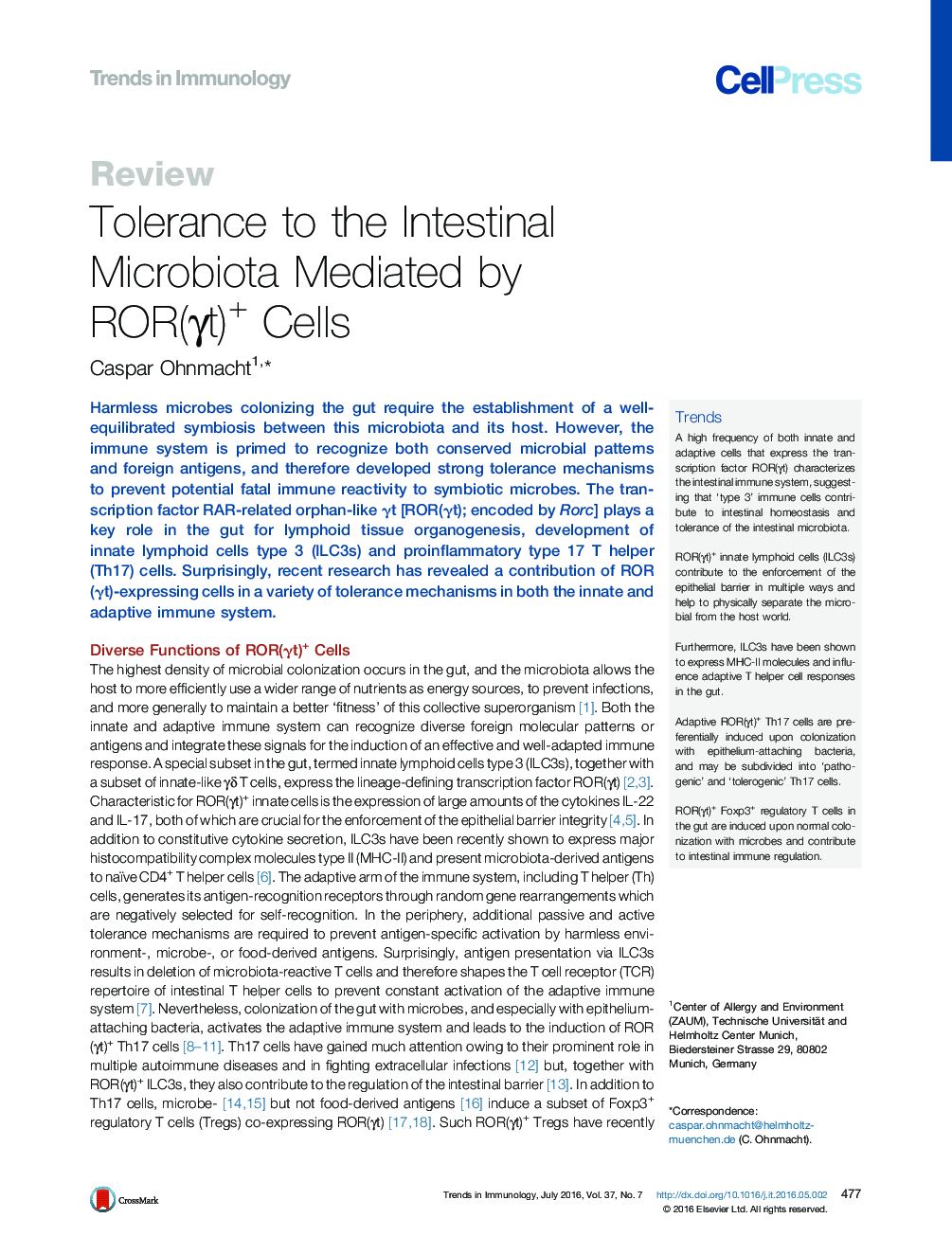| Article ID | Journal | Published Year | Pages | File Type |
|---|---|---|---|---|
| 4359663 | Trends in Immunology | 2016 | 10 Pages |
Harmless microbes colonizing the gut require the establishment of a well-equilibrated symbiosis between this microbiota and its host. However, the immune system is primed to recognize both conserved microbial patterns and foreign antigens, and therefore developed strong tolerance mechanisms to prevent potential fatal immune reactivity to symbiotic microbes. The transcription factor RAR-related orphan-like γt [ROR(γt); encoded by Rorc] plays a key role in the gut for lymphoid tissue organogenesis, development of innate lymphoid cells type 3 (ILC3s) and proinflammatory type 17 T helper (Th17) cells. Surprisingly, recent research has revealed a contribution of ROR(γt)-expressing cells in a variety of tolerance mechanisms in both the innate and adaptive immune system.
TrendsA high frequency of both innate and adaptive cells that express the transcription factor ROR(γt) characterizes the intestinal immune system, suggesting that ‘type 3’ immune cells contribute to intestinal homeostasis and tolerance of the intestinal microbiota.ROR(γt)+ innate lymphoid cells (ILC3s) contribute to the enforcement of the epithelial barrier in multiple ways and help to physically separate the microbial from the host world.Furthermore, ILC3s have been shown to express MHC-II molecules and influence adaptive T helper cell responses in the gut.Adaptive ROR(γt)+ Th17 cells are preferentially induced upon colonization with epithelium-attaching bacteria, and may be subdivided into ‘pathogenic’ and ‘tolerogenic’ Th17 cells.ROR(γt)+ Foxp3+ regulatory T cells in the gut are induced upon normal colonization with microbes and contribute to intestinal immune regulation.
